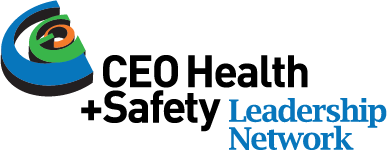Want to win in the battle for talent? Make sure you have a culture of health and safety
Workplace Safety & Prevention Services just released its latest Health and Safety Leadership Survey. It is interesting to see how attitudes, behaviours, and priorities have shifted in the three years since the first survey.
Download the 2022 Health & Safety Leadership Survey White Paper
In the inaugural survey, most leaders were focused on legislation, injury prevention, and cost management. In year two of the survey, priorities shifted, and leaders became acutely aware of the importance of building physical and psychological health and safety in the workplace. Workplaces that didn't necessarily have a plan in place saw that it was imperative to survival. Those that had already built a culture of health and safety have weathered the pandemic better than others and experienced fewer cases of COVID.
Now, priorities have shifted again, and the focus of most leaders who responded is squarely on attracting and retaining talent. Valuing the whole person and caring for the psychological and physical health, safety, and wellbeing of employees is not a differentiator; it is expected.
More than half of respondents reported that attraction and retention is their most significant business challenge. There was nearly universal agreement that ensuring employees' safety and wellbeing is the key to attracting and retaining employees.
Read blogpost: Employees are looking for employers they can trust to look after their safety and wellbeing
Respondents were categorized based on the level of development of health and safety in their workplaces.
- 17% Leading - Health and safety is treated as a strategic priority. Information is reported publicly, and board decisions consider the impact on health and safety.
- 29% Proactive - There is active board discussion and support to enhance the management of health and safety.
- 34% Managing - Focused on management of day-to-day health and safety.
- 16% Reactive - Focused on addressing health and safety issues as they arise. Focus remains on incident rates.
- 4% Start of Journey - Starting to understand what is involved in health and safety. Focused on incident management.
The inclusion of employee responses in this year's survey revealed a few gaps and provided valuable insights that can be used to enhance health and safety programs, recruitment, and onboarding efforts.
- Employers say they are losing employees due to preventable issues (71%). Both employers and employees agree that the primary reasons for leaving are increased workload and mental health. However, employers say the other primary reasons for departure are early retirement and the desire to stay on government benefits. On the other hand, employees attribute departures to the desire for increased flexibility or, in cases where workload has increased, additional pay.
- Overall, 82% say senior leaders are actively involved in health and safety. However, 96% of Leading organizations say leaders are actively involved, and 93% of Proactive respondents say the same.
- Overall, only 82% of respondents say their leadership team understands the correlation between health and safety and business performance. Again, the numbers are much higher in Leading and Proactive workplaces at 99% and 92%, respectively.
- Among the challenges hindering the implementation of health and safety, the lack of senior leadership support grew 14 percentage points to 25%.
- Lack of support across senior management is a particular issue for businesses in the Reactive (53%) and Start of Journey (56%) categories and is felt most acutely in the retail (38%) and construction (36%) sectors.
Make it personal
You may think you are pouring a lot of effort and resources into health, safety, and wellbeing, but you might be missing the mark if employees don't feel it personally.
Lynn Brownell, President and CEO at Workplace Safety & Prevention Services, says, "We tend to evaluate programs and practices from a 30,000-foot, organizational perspective, but this survey and so many other indicators tell us that employees are looking for alignment between organizational and personal values. They want to know that they matter to you, not in a broad, theoretical sense, but deeply personal and carefully considered way."
Mental health is and should remain a priority for leaders
Managing mental health is described by 76% of participants as being very important in their efforts to attract and retain employees. This marks a gain of 13% since 2019. It also appears at the top of the list of concerns to be addressed immediately. Again, however, there is room for improvement. Only 76% indicated that preventing mental harm is part of their health and safety program.
Kiran Kapoor, Vice President, Service Delivery at WSPS, says it may be a case that employers are still figuring out how to integrate mental harm prevention into their OHS programs. "Start somewhere. Pick what you will focus on and work through it in a way that makes sense for your business. The National Standard of Canada for Psychological Health and Safety in the Workplace is excellent but can be overwhelming. We developed the Mental Harm Prevention Roadmap to make the process simpler and more digestible for businesses of all sizes."
Read blogpost: 35 Tips for Valuing the Whole Person and Creating a Psychologically Safe Workplace
Pay attention to onboarding
The survey revealed a disconnect with respect to onboarding.
When asked about specific onboarding steps, employees remember most at half the rate of employers. For example, 83% of employers say they provide an overview/tour of the workplace, but only 49% of employees recall this. In the case of learning about safety-related procedures, 83% of employers say they are explained, but only 37% of employees say they learned this.
Kapoor suggests this might reflect ineffectiveness. “Employers need to think about how the information is received, absorbed, and actioned by employees. We need to understand how to close these gaps to support the business and employees, so they are successful and remain healthy and safe.”
Listening and flexibility are critical in designing the workplace of the future
Not surprisingly, many of the leaders who responded indicated that they are figuring out if and how they will ask remote employees to return to the workplace.
The results reveal that employees are at different states of readiness when it comes to re-entry. Many employees have embraced remote work and others miss their peers and in-person interactions. Some decided the pandemic was the catalyst they needed to shift into retirement, and many want to continue working but perhaps in a different manner than they did previously.
There is still a great deal of uncertainty and fear factoring into actions and decisions, and many issues are extremely polarizing. Leaders will need to shed rigidity and accept that openness to change and continuous improvement are important qualities that will propel future success.
Sixty-eight percent of employers say they are making accommodations for returning to the workplace. The top four accommodations are:
- Preferences around flexibility
- Allowing/continuing work from home
- Explaining decisions through managers
- Asking employees what they prefer
Kristy Cork, a mental health consultant at Workplace Safety & Prevention Services, says listening is key. "We guess or make assumptions about what people want. We think things are a concern, but we need to ask employees before making major changes or implementing programs. Otherwise, employers are at risk of putting resources where they won't have the desired impact."
Read blogpost: The Future of Work and Its Impact on Psychological Health and Safety
Take time to evaluate
The number of respondents indicating that they conduct a formal evaluation of their health and safety program has been consistently low throughout the three years of research. Evaluation provides the opportunity to improve and enhance health and safety efforts. However, perhaps most importantly, it ensures that the money, time, and effort dedicated to health, safety and wellbeing are well spent and are producing the desired results.
Need help getting started? Check out these resources from WSPS.
Mental Health & Employee Wellbeing (wsps.ca)
Psychological Safety - A Roadmap (wsps.ca)
Our Consulting Programs | WSPS
Take the first step
No matter the size of your business or the level of maturity of your health and safety program, you can act on the information in the Health & Safety Leadership Survey.
You don't necessarily have to create a complicated, multi-pronged strategy. Just start somewhere. It might be just one or two achievable and meaningful steps that transform your workplace and the sense of safety and wellbeing that your employees feel.
Employees should know that they are joining an organization that is deeply invested in keeping people healthy and safe before submitting a resume and certainly when they join the organization until they leave.
Download the 2022 Health & Safety Leadership Survey White Paper

 Fresh Communications in collaboration with WSPS
Fresh Communications in collaboration with WSPS



